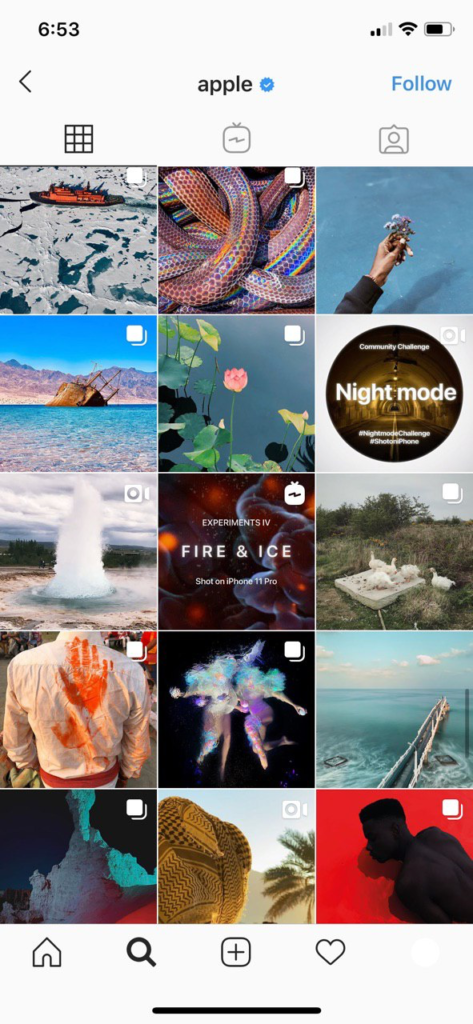Social media is a driving force behind some of the most revolutionary changes in the world of photography. Because of social media, every photographer, artist, designer, or influencer must learn the proper visual branding. And unfortunately, branding is the area many creative people struggle with, without even realizing it.
Every social media post has the potential to help your personal brand grow. Your main objective should be creating unique content that’ll resonate with your followers. The secret to successful social media branding is that there is no single magic formula, but there are effective strategies that, if employed correctly, will bring you closer to your goal. For example, you can monetize your Facebook live with some simple tips. This article will go through the most effective principles for branding your social media post as a professional.
Consistency
The first and arguably the most important principle is consistency. Social media users are used to seeing and identifying repeating patterns and themes. If you want to build a successful brand online, you need to be mindful of every detail you create. Everything about your pictures has to become an extension of your brand. Design your logo or its variation and make it consistent across all social media platforms. Don’t use more than three typefaces. If you use four and more, it can damage the patterns your followers associate with your brand.
Notice how Apple consistently uses photos to deliver a message about the quality of their products.

 Watermarks
Watermarks
Watermarks have a lot of benefits. Not only watermarks are easy to make, but they also protect copyright and increase brand recognition. Place your logo on each picture to prevent people from using your content without your permission or without giving you credit. Here are some tips on creating watermarks:

- Determine a standard logo size and apply it to all pictures consistently.
- Create specific guidelines addressing the logo’s size and placement.
- The best place to put your logo is in the bottom right corner.
- Bring down the opacity to 50-60% to make your logo less destructive, yet visible.
- You can also use a website like Water Marquee to watermark your images.
Colors
Color is the primary visual element and a powerful form of communication. Clever use of colors has the potential to influence people’s actions and decision making. If you don’t strategically employ colors throughout your social media, you’re missing out on a great opportunity. For instance, if you want to build trust with your audience, make blue a prevalent color of your photos. Use green, pastel, and earthy colors if sustainability and environment are central to your brand’s values. Here is a great resource on color theory from Amy L Smith Photography.
If your personal brand is found on the idea of uniqueness and authenticity, don’t apply overused colors. Instead, find unique and rarely-used colors to establish yourself as different and grab the audience’s attention. You can also experiment and try out different filters. By using the same colors and filters in all social media platforms, you strengthen the association between your personal brand and the chosen visuals. Using particular colors repeatedly also reinforces brand identity and recognition.
Also Read: How to Get That Trendy Flat Photo Look On Your Phone
Since WholeFoods establish themselves as a chain with local and organic goods, social media branding is designed accordingly with a lot of greenish colors.

 Relevance
Relevance
Posting relevant visual content is another critical element of social media success. Studies show than 44% of social media users stop following brands because they posted too frequently, whereas 52% unfollow because they believe the content is boring. The bottom line here is don’t post for the sake of posting something. Keep your social media gallery relevant, simple, and meaningful. And remember posting consistently isn’t the same as posting way too frequently.
Product placement
If you take a closer look at your Instagram feed, you’ll notice that product placement is everywhere. Connecting and collaborating with other brands and influencers is a great way to get your brand known. You can do a collaboration with the best influencer and marketing agencies that can help out in choosing the right influencer for your brand. Social media branding requires smart product placement. When making product images, focus on the logo and get creative with lightning and composition. Unless your picture is clearly designed for commercial purposes only, try to be creative and don’t put out an image that screams product placement to your followers’ faces.
Many Instagram influencers strategically employ product placement. Here is how Kim Kardashian uses her social media for advertising products.

 Description
Description
Social media typically allow adding a text description to your picture. A general rule of thumb is that Facebook descriptions should be short, while Instagram descriptions can go a bit longer. Facebook users want to see quick and engaging description texts. With Instagram, you can add detailed mini-posts, since users tend to stay longer on the platform.
Social media tags are a great tool for building awareness about your personal brand and increasing social media engagement. Appropriate use of Social Media Tags can take your picture practically anywhere on the web.
Video branding your social media is especially effective. A stylish channel intro can successfully establish a professional tone before your photography is even seen. And it costs much less than you might think. Read more about How to Make a YouTube Intro for Free.
Final thoughts
Creating your own media hub on social media can be challenging, but it’s possible if you choose the right approach and right design. Always remember that consistency is key to the ultimate goal of social media branding efforts – brand recognition. So, there is no better strategy than crafting the right kind of messages consistently. Repeat particular visual elements to further reinforce your brand identity. Don’t forget that text descriptions do matter, and they should help and support your pictures. Think from a long-term perspective and always take note of what’s working or not and adjust as needed.
Also Read:


